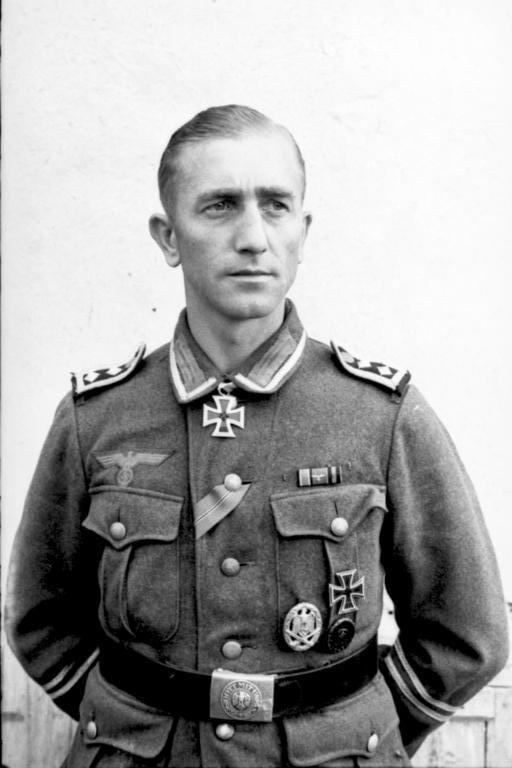 | ||
Nazi Germany
In the German military, the appointment of Hauptfeldwebel was the German equivalent of a Commonwealth Company Sergeant Major or American Company First Sergeant. There was one such non-commissioned officer (NCO) in every infantry company, artillery battery, cavalry squadron, etc. He was the senior NCO of his subunit, but his duties were largely administrative and he was not expected to accompany his unit into an assault or a firefight.
Contents
The Hauptfeldwebel had many nicknames, including Spieß ("Spear") and Mutter der Kompanie ("company mother"). He wore two rings of NCO braid around the cuff of his sleeves (nicknamed "piston rings") and carried a Meldetasche (reporting pouch) tucked into the tunic front, in which he carried blank report forms, rosters and other papers related to his duties. The German Army had no equivalent of the Commonwealth Regimental Sergeant Major.
The appointment could be held by a senior non-commissioned officer (Unteroffizier mit Portepee). If the billet was filled out of necessity by an Unteroffizier ohne Portepee, he was termed a Hauptfeldwebeldiensttuer, or "one serving as Hauptfeldwebel."
Other armed forces
Equivalent to the appointment Hauptfeldwebel in Nazi Heer and Luftwaffe, was the SS-Stabsscharführer in the Waffen-SS until 1945.
Bundeswehr
Today, the former billet Hauptfeldwebel as a company's Senior NCO has become a regular rank between Oberfeldwebel and Stabsfeldwebel. The position previously known as Hauptfeldwebel is now called Kompaniefeldwebel, while the nicknames - and, in their general outlines, the duties - have remained. Company sergeants major often have the rank of Hauptfeldwebel now, though.
